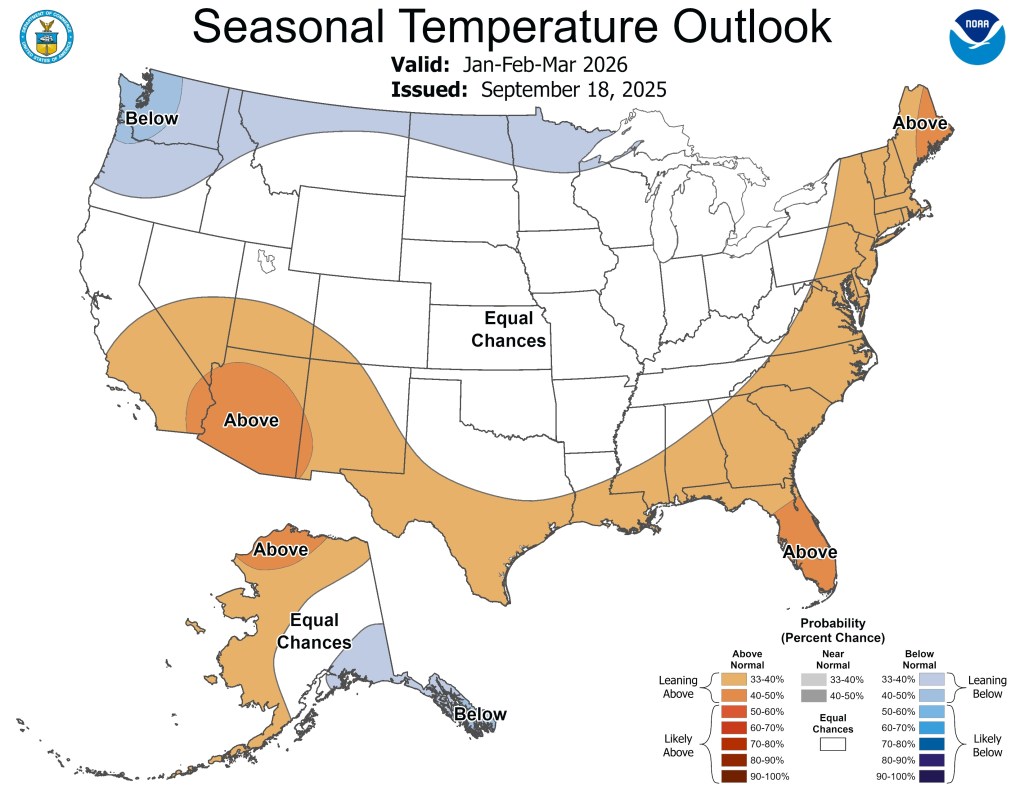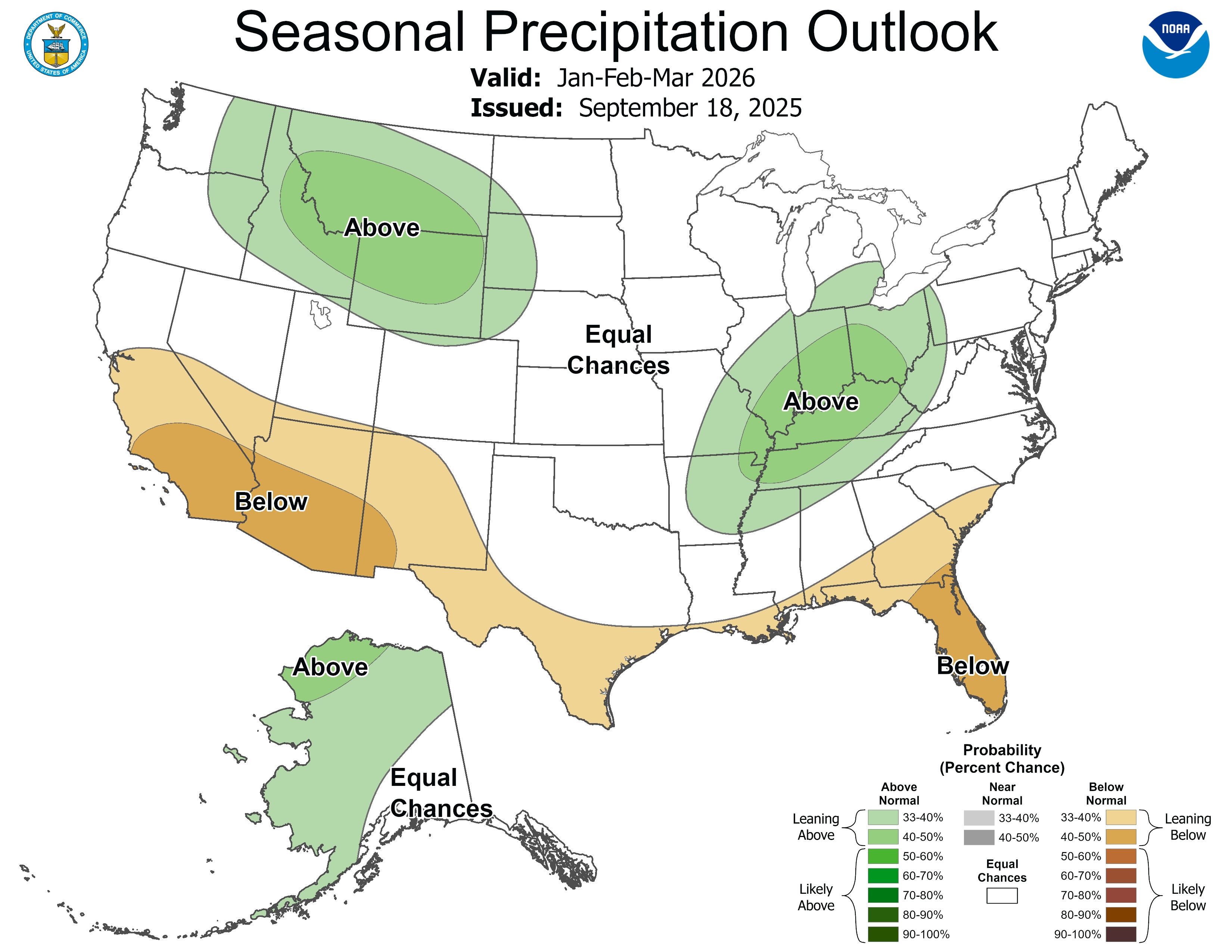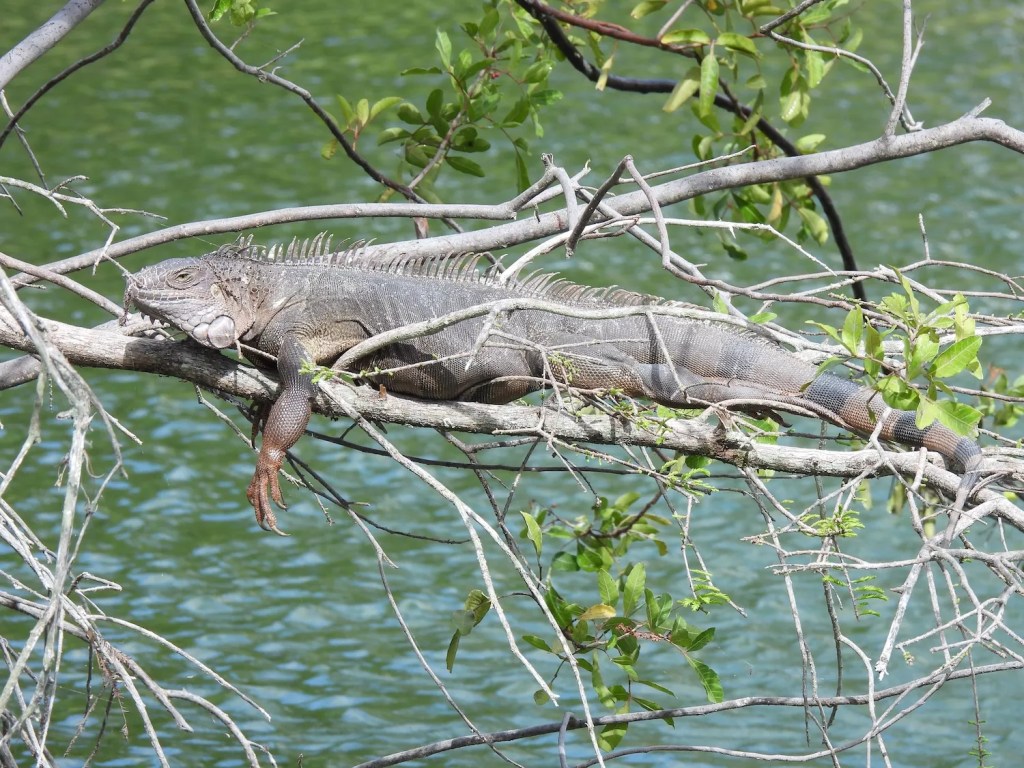South Florida, for all its beauty, is filled with perils like hurricane season, road rage, and botched BBLs, to name a few. But a recent winter forecast suggests residents may be spared one of South Florida’s hazardous quirks: frozen iguanas falling from the heavens.
That’s because the National Weather Service (NWS) is predicting a warmer, drier winter than average in South Florida, according to the National Oceanic and Atmospheric Administration (NOAA). NWS forecasters are predicting a 50 percent chance of above-average temperatures for January through March, and a 50 percent chance of below-average rainfall.
 The National Weather Service is predicting a 50-percent chance that South Florida will see above-average temperatures from January through March.
The National Weather Service is predicting a 50-percent chance that South Florida will see above-average temperatures from January through March.
 The National Weather Service forecasts a 50 percent chance of below-average rainfall in South Florida from January through March.
The National Weather Service forecasts a 50 percent chance of below-average rainfall in South Florida from January through March.
South Florida’s average rainfall for that time period is about 6.5 inches, and its average temperature lingers between 66 degrees and 73 degrees. While that’s the perfect temperature to attract flocks of snow birds from up north, it’s well below the temperature typically needed (40 degrees) for a frozen iguana to cascade from a tree (and possibly knock you in the head while you’re in downward-facing dog).
 Not sure a blood-spattering iguana killing would be considered humane!
Not sure a blood-spattering iguana killing would be considered humane!
Photo by Dr. Steve A. Johnson
Green iguanas are the scaly, dinosaur-looking reptiles that both mesmerize and terrorize South Florida. They originally came to South Florida in the 1960s through the pet trade and are considered invasive because they’ve disrupted indigenous food chains and undermined infrastructure through burrowing, according to the Florida Fish and Wildlife Conservation Commission.
Iguana populations have positively thrived in South Florida ever since arriving from warmer tropical climates; they’re seen regularly strutting through parks, basking on sun-soaked concrete, and perched nonchalantly on tree branches. But something cartoonish happens when the temperature dips into the 40s: They literally freeze and fall out of trees.
It may seem totally far-fetched to South Florida newbies, but anyone who’s seen multiple winters here knows when temperatures get low enough, there’s a chance for raining iguanas.
The green iguana is a cold-blooded reptile, which means its body lacks the ability to regulate its internal temperature, unlike humans, who can regulate their body temperature through sweating. So when the temperature drops below 50 degrees, iguanas can become completely immobilized if they’re exposed to the elements, according to iguanacontrol.com.
“In colder conditions, their metabolism slows down and they become sluggish,” according to the iguana wranglers’ website. “While immobilized, iguanas are at risk of injury or predation, but it is important to note that their immobilization is temporary and often reversible.”

